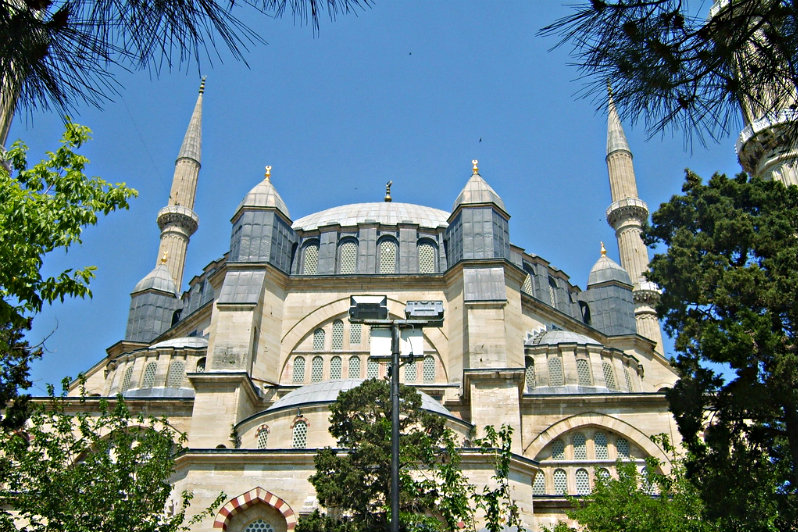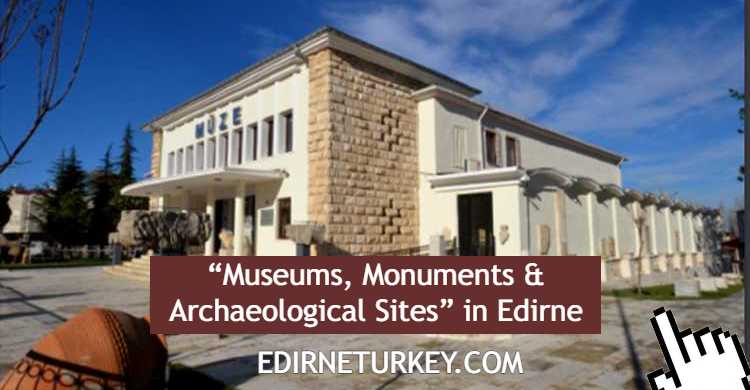Edirne.. A city with rich and powerful heritage from Ottoman Empire

The Ottomans had strong and original artistic traditions in everything from literature and music to ceramics, metalworking and textiles, as well as calligraphy, illumination and decoration. But none of these compare with the perfection they achieved in architecture. If the Renaissance manifested itself most perfectly in sculpture, then Ottoman civilization found its most mature expression in architecture… Edirne is one of the three cities that share that rich and powerful heritage to the highest degree. (The other two are Istanbul and Bursa.)
 A CAPITAL CITY: Edirne was the imperial capital for eighty-eight years, decked with buildings reflecting the power of the emerging empire. But interest in the former capital continued. To examine the Ottoman heritage at Edirne is to encounter the story of a dizzying rise – at least between the founding period and the 17th century when the empire’s power began to wane. Mosques and mosque complexes, madrasas, caravanserais, markets and bazaars, khans, baths, bridges. Dozens of monuments, most of them milestones in the Ottoman art of building. But two complexes take precedence over the others: the Complex of Beyazid II and Selimiye.
A CAPITAL CITY: Edirne was the imperial capital for eighty-eight years, decked with buildings reflecting the power of the emerging empire. But interest in the former capital continued. To examine the Ottoman heritage at Edirne is to encounter the story of a dizzying rise – at least between the founding period and the 17th century when the empire’s power began to wane. Mosques and mosque complexes, madrasas, caravanserais, markets and bazaars, khans, baths, bridges. Dozens of monuments, most of them milestones in the Ottoman art of building. But two complexes take precedence over the others: the Complex of Beyazid II and Selimiye.

A REFLECTION OF OTTOMAN CITY DESIGN
Mosque complexes are the central element in Ottoman city design, their function equivalent to that of the square in the cities of the West. Complexes are social sharing areas that serve the principal needs of everyday life such as worship, education, health and commerce. The Complex of Beyazid II is the most outstanding example of this form in terms both of its well-planned functionality and its architectural unity and aesthetics. Its hospital was one of the leading medical institutions of its time, remaining in operation right up to the end of the 19th century. The asylum where mental patients were treated was an advanced institution that practiced music and water therapy. And with a dome 20.55 meters in diameter, its mosque dominated the entire complex. Selimiye is also important as an example of the transition from the mosque-cum-inn to the classical mosque.

AND SELİMİYE…
Selimiye was not designed as a complex. It took on the characteristics of a complex with the addition of annexes both during and after its construction phase. But as a mosque it is a phenomenon in the history of architecture. There are geniuses who have left their mark not only on their own time but on the universal history of the lands where they produced their work. Such geniuses appear on the stage of history only once in several centuries. Mimar Sinan is one of them. What makes Selimiye unique among central-domed structures are its airy spaciousness and the unity of its monumental space, which is why it was included on the UNESCO World Heritage List in 2011.

OTTOMANS & MOSQUES
The mosque was the center of life in Ottoman urban architecture, a central structure that encapsulated an entire civilization. A key role was played as well by mosque complexes, so called because they were groups of buildings where all the vital needs of the individual in Ottoman society were met
MUSICAL ARCHITECTURE IN EDIRNE
Edirne is one of the monumental cities of Ottoman architecture. Viewed as a whole, the city manifests Ottoman civilization’s structure of perception in all its impressiveness. An architectural ‘music’ in everything from the mosque decoration – it carpets, its lecterns, its muqarnas work, its doors – to the worship hall itself defines the spirit of Edirne. (SOURCE: SKYLIFE – photos updated 2108)



